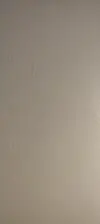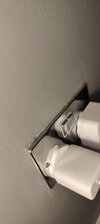Hi all,
This wall had wall paper on, but it was scraped off and ended up marked (See Picture) Then it was just painted over in silk..
I'm planning on wallpapering it again, I know I'll have to sand the silk down.. But will the wall paper be okay the way the wall is and around the sockets?
TIA
This wall had wall paper on, but it was scraped off and ended up marked (See Picture) Then it was just painted over in silk..
I'm planning on wallpapering it again, I know I'll have to sand the silk down.. But will the wall paper be okay the way the wall is and around the sockets?
TIA







